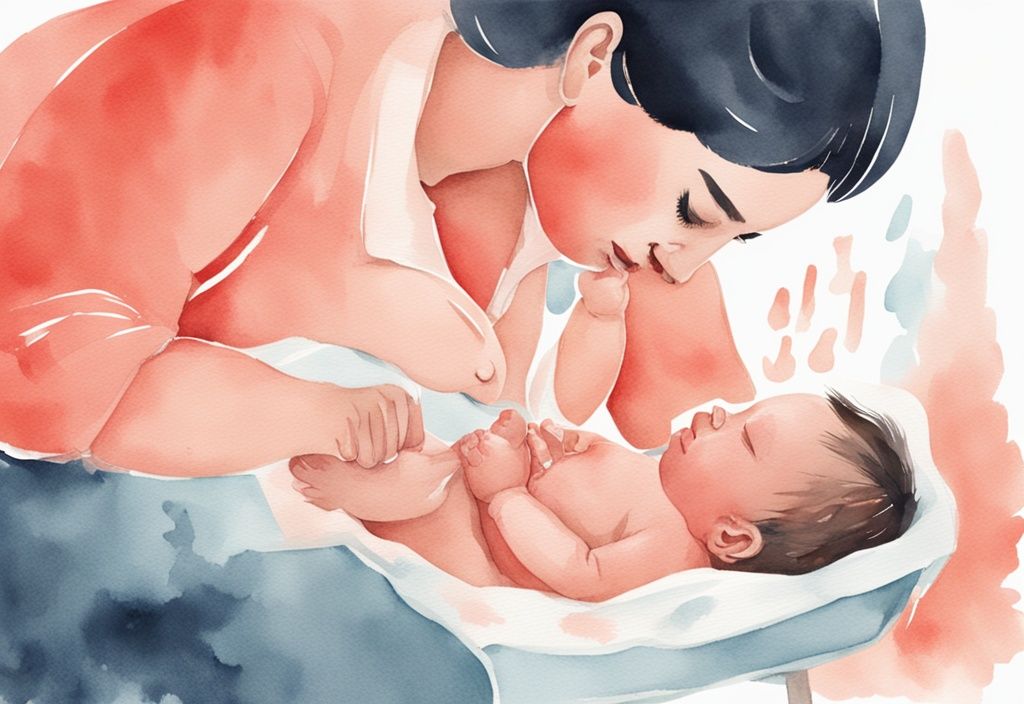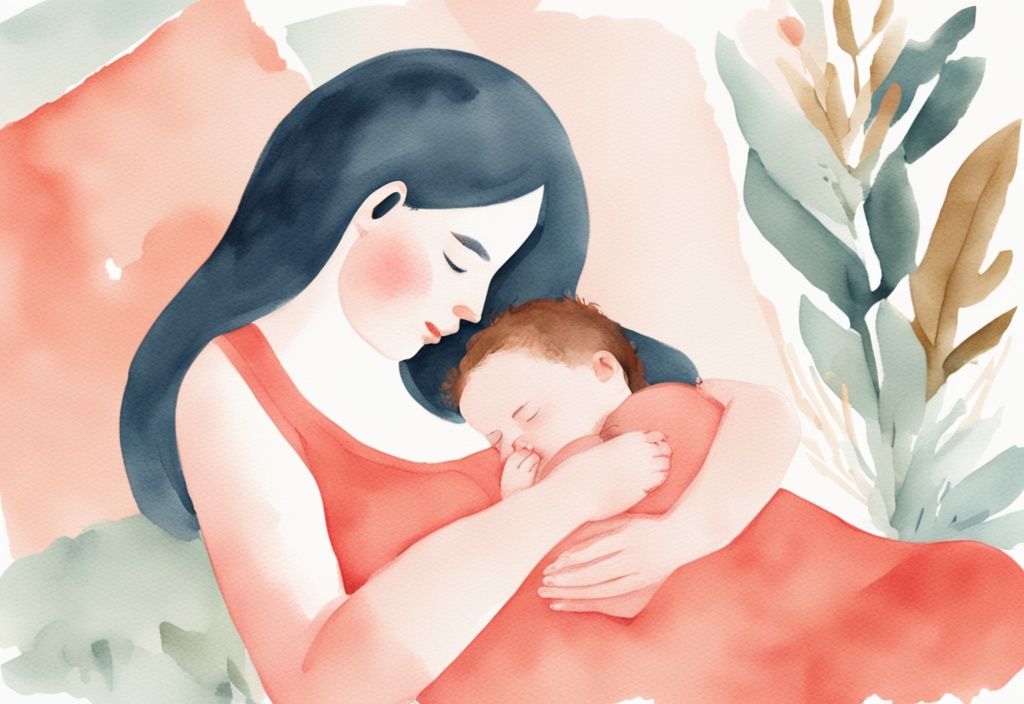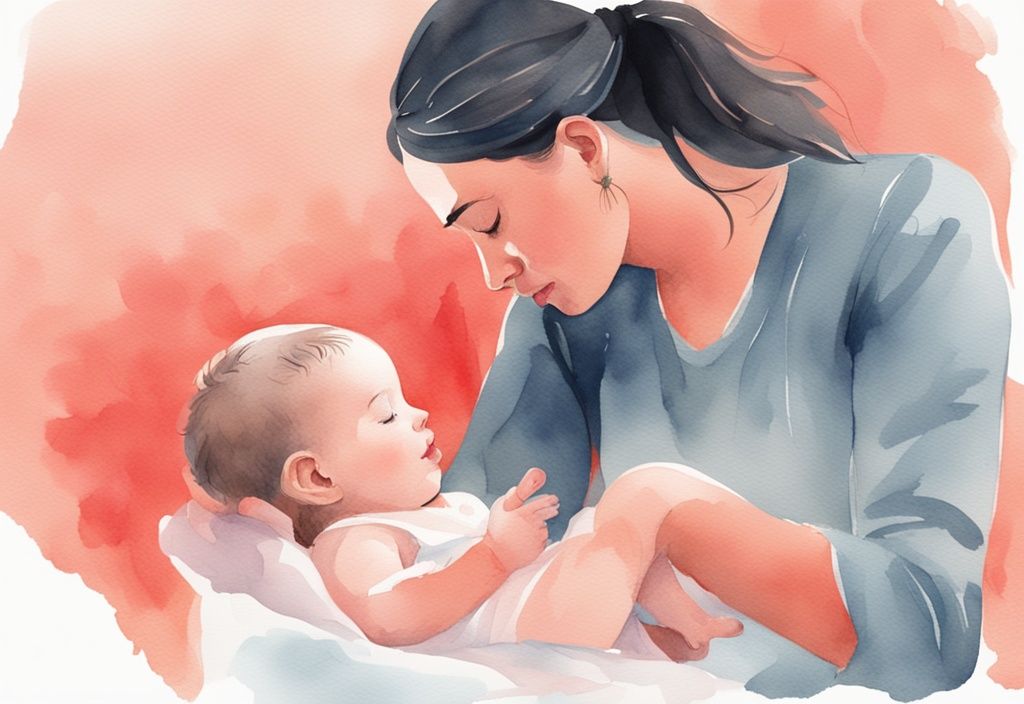Hey there, fellow night-time warriors! Ever wondered how to know if your baby is cold at night? It’s a common worry, and rightly so. Our little ones can’t exactly tell us they’re chilly, can they? But don’t fret, I’ve got you covered.
In this article, we’ll delve into the subtle signs that your baby might need an extra blanket. We’ll explore everything from skin temperature changes to adjusting their sleep environment. I’ll also share some practical tips to keep your baby cozy throughout the night.
So, let’s get started. Together, we’ll ensure that your baby stays snug and secure, even on the chilliest nights. Because a warm baby means a good night’s sleep for everyone, right?
Recognizing Signs Your Baby is Cold at Night
As a parent, understanding how to know if your baby is cold at night is crucial for ensuring their comfort and well-being. This section will guide you through various physical and behavioral signs that can help you determine if your little one needs extra warmth during those chilly nights.
Physical Indicators of a Cold Baby
Skin Temperature and Color
One of the simplest ways to know if your baby is cold at night is by checking their skin temperature and color. Gently touch your baby’s chest or back. Does it feel cold? If so, it might be time to add an extra layer or a cozy blanket. Also, keep an eye on their skin color. Pale or blotchy skin can be a hint that your baby is feeling chilly. And if those little lips or skin turn bluish, it’s a clear sign that your baby needs more warmth right away.
Body Position and Movement
Babies have their own little ways of telling us when they’re cold. If you notice your baby sleeping on their tummy with arms and legs tucked tightly, it might be their way of conserving heat. Increased movement or restlessness can also be a clue. And if your baby seems unsettled after a night feed, it could be another sign that they need a bit more warmth to get cozy again.
Breathing Patterns
Paying attention to your baby’s breathing can also help you know if your baby is cold at night. Rapid or shallow breathing might be their way of trying to generate more heat. Any changes from their usual breathing patterns are worth noting, as they might indicate your baby is not as comfortable as they should be.
Behavioral Signs of Coldness
Crying and Fussiness
Babies often communicate discomfort through crying and fussiness. If your little one is crying without an obvious reason, it might be because they’re feeling cold. Recognizing these cues is key to ensuring your baby is warm enough and preventing unnecessary distress. Remember, understanding how to know if your baby is cold at night can make all the difference in keeping them happy and snug.

Sleep Disturbances
Sleep disturbances are another telltale sign. If your baby is waking frequently or struggling to fall into a deep sleep, they might be feeling cold. Early morning wake-ups, especially from 3am onwards, can also indicate they’re not warm enough. Creating a comfortable sleeping environment can help ease these disturbances and ensure your baby sleeps soundly.
What to Do if Your Baby is Cold at Night
As parents, we all want our little ones to sleep soundly and comfortably through the night. Understanding how to know if your baby is cold at night is essential for their well-being. This section will guide you through practical tips and strategies to ensure your baby stays warm and cozy.
Practical Tips to Keep Your Baby Warm
Dressing Your Baby Appropriately
Layering Techniques
Have you ever wondered if your baby is too cold at night? It’s a common concern, and one I’ve had many times myself. A simple and effective way to keep your baby warm is by using lightweight, breathable layers. This method helps retain warmth without the risk of overheating. I often start with a sleeveless bodysuit under my baby’s romper. It adds that extra layer of warmth without bulk. And don’t forget those tiny toes! Breathable socks can work wonders in keeping little feet toasty. A handy tip I’ve learned is to dress your baby in one more layer than you’re wearing. This way, they stay snug and comfortable all night long.
Choosing the Right Sleepwear
Picking the right sleepwear is crucial. It should match the room temperature to keep your baby warm. I usually go for a romper or bodysuit paired with leggings. It’s all about finding that perfect balance. Well-fitting, layered clothing allows you to adjust the layers easily, ensuring your baby is warm but not restricted. This flexibility is key to keeping your baby comfortable and happy.
Adjusting the Sleep Environment
Using Sleep Bags and Swaddles
When it comes to maintaining a cozy temperature overnight, sleep bags and swaddles are lifesavers. Choose one with the right TOG rating to keep your baby warm without needing loose blankets, which can be risky. Remember, head coverings are a no-go for babies under 12 months due to suffocation risks. Instead, focus on ensuring the sleep bag or swaddle fits snugly and comfortably. It’s a simple step that makes a big difference.
Room Temperature Control
Keeping the room at the right temperature is another piece of the puzzle. Aim for a cozy 68-72 degrees F (20°C and 22.2°C). A room thermometer can be a great tool to help you monitor this. If the room feels chilly, a space heater can warm it up before bedtime. Just be sure to turn it off before your baby sleeps to keep things safe. Managing the sleep environment carefully can significantly enhance your baby’s nighttime comfort, helping everyone get a good night’s rest.

Preventing Your Baby from Getting Cold at Night
Ensuring your baby stays warm and cozy at night is a common concern for many parents. In this section, we’ll explore how to maintain the right room and body temperature for your little one, along with avoiding common mistakes that might leave your baby feeling chilly.
Optimal Room and Body Temperature for Babies
Ideal Sleeping Temperature
Finding that sweet spot for room temperature can be a game-changer in understanding how to know if your baby is cold at night. Aim for a cozy 68-72 degrees F (20°C and 22.2°C). This temperature range is like a warm hug for your baby, keeping them comfortable without overheating. A little tip from my own experience: keep the crib away from windows, doors, or vents. Drafts can be sneaky, and we want to keep that cozy atmosphere just right for your little one.
Monitoring Baby’s Body Temperature
Feeling unsure about your baby’s warmth? A quick touch on their chest or back can tell you a lot. These areas are reliable indicators of their core temperature. Remember, a baby’s normal body temperature is usually between 97.7°F and 99.5°F. If you notice any changes, it might be time to adjust their clothing or the room’s temperature. It’s all about making sure your baby feels snug and secure.
Common Mistakes to Avoid
Overdressing and Overheating
We’ve all been there—worried about our baby being too cold, we layer them up like a little snowman. But overdressing can lead to overheating, which is no fun for anyone. Trust your instincts. If your baby seems comfy and is dressed appropriately for the room temperature, you’re doing great. Recognizing the signs of both coldness and overheating helps you keep your baby just right, ensuring peaceful sleep for everyone involved.
Using Unsafe Bedding
Choosing the right bedding is a biggie in preventing your baby from getting cold at night. Loose blankets can be a hazard and might not keep your baby consistently warm. Instead, go for wearable blankets or sleep sacks. These are like cozy sleeping bags for babies, keeping them snug without the risks of loose bedding. By understanding how to know if your baby is cold at night, you can make informed choices that promote safety and comfort, giving you peace of mind as you tuck your little one in for the night.
FAQ
Ever found yourself awake at night, wondering if your little one is warm enough? You’re not alone. Let’s dive into some common questions about keeping your baby cozy at night.

Is it safe to use a space heater in my baby’s room?
- Ah, the trusty space heater! Yes, you can use it, but only to warm up the room for about 20-30 minutes. Remember to turn it off before bedtime. Safety first—make sure the heater is placed securely to avoid any overheating or fire hazards. I once had a scare with a space heater, and trust me, double-checking is worth the peace of mind!
When should I consult a pediatrician about my baby being cold?
- If your baby often feels cold, it might be time to chat with a pediatrician. Sometimes, our little ones are trying to tell us something more than just “I’m chilly.” If you’ve tried all the tricks in the book and your baby still seems cold, it’s best to get some professional advice. I remember the first time I had to make this call—it felt like a big step, but it was reassuring to know I was doing the right thing for my baby.
Conclusion
Understanding how to know if your baby is cold at night is a vital part of ensuring their comfort and safety while they sleep. As a parent, recognizing those little signs of coldness can make all the difference in keeping your baby warm and cozy.
Think of it like this: by keeping an eye on both physical and behavioral cues—like skin temperature, body movements, and sleep patterns—you can get a pretty good idea of how comfortable your little one is. It’s all about adjusting those clothing layers and making sure the sleep environment is just right. No need to overthink it, just practical steps to keep them snug.
And let’s not forget about those common pitfalls! Overdressing or using unsafe bedding can lead to discomfort and even risks. Trust your instincts, stay informed about the best conditions, and you’ll be all set to enhance your baby’s nighttime comfort. Remember, it’s all about finding that sweet spot where your baby can rest easy and you can too.


